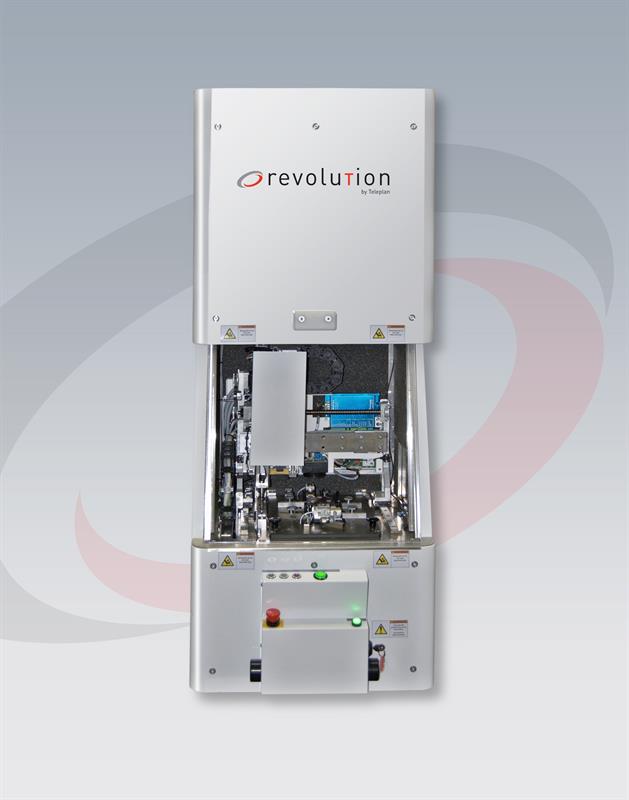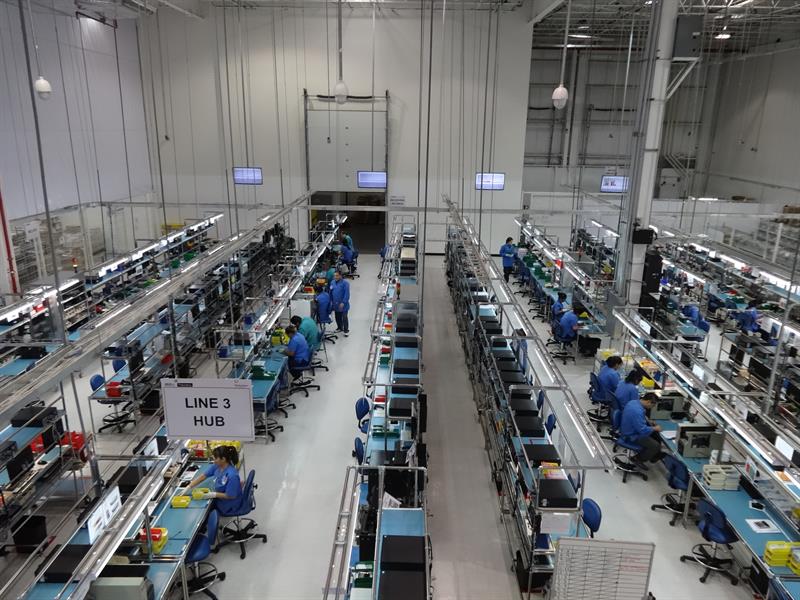Despite many years of being encouraged to 'reuse, reduce and recycle', UK consumers of electrical and electronic equipment appear to remain doggedly averse to the concept. And figures from a recent report generated by the United Nations University (UNU) put the issue into perspective.
The report examines the global e-waste streams and presents some compelling data. It says European countries generated 11.6million tonnes of e-waste in 2014. Those with the highest levels of e-waste generation were Germany (1.8m tonnes), the UK (1.5m tonnes) and France (1.4m tonnes).
It adds that, in 2012, only 3.2m tonnes of e-waste was officially collected in the 28 Member States of the European Union from the 9m tonnes of e-waste generated in that year.
The European Union is one of the few regions in the world where there is uniform legislation regarding the collection and processing of e-waste. The successor to the WEEE Directive will come into force in 2019, with one of its targets being the collection of 85% of generated e-waste. But no country is near that figure, with the exception of Sweden, Denmark and Bulgaria, who collect more than 60%.
A number of ways are available to consumers to dispose of unwanted electronic and electrical equipment. For example, there are official take back schemes, such as those offered by retailers. These are accompanied by collection points and pick up services.
Consumers can – and do – use the domestic waste stream, where equipment is likely to go to landfill or incineration. Finally, there are collection schemes – operated by specialised waste companies and recyclers – which work alongside the official schemes.
According to UNU, the UK disposed of 23.5kg of domestic e-waste per inhabitant in 2014, a total of 1.511m tonnes. However, citing figures from 2012, UNU says official take back schemes recovered 504,000 tonnes of e-waste, whilst 394,000 tonnes of e-waste entered the domestic waste stream.
Another view of the problem comes from Teleplan, which specialises in aftermarket service. It says Britain is becoming a throwaway society and adds that consumers shun repairs to broken phones, TVs, kettles, laptops, tablets and consumer electricals.
In a recent survey, it found 69% of respondents had experienced at least one breakage of an electrical item during the last two years. Rather than opt for a quick and simple repair, the company says, consumers end up binning most broken items – even those with a relatively high value. Teleplan estimates that, as a result, consumers buy more than £1.4 billion worth of replacement goods every year. The implication is they don't need to.
Sven Boddington, Teleplan's vice president for global marketing and client solutions, said: "The results of the survey surprised us. Rather than in the thrifty post war era, we are now seeing a generation of 'Binsters' – those who believe broken goods are only fit for the trash. Not only does the throwaway mentality add to the e-waste problem, it also ignores the rights that many consumers have to protect them from damaged or faulty items.
"Replacement and repaired goods can save customers hundreds of pounds and depending if they have the correct warranty plan, consumers can have the goods collected and delivered directly to and from their homes."
And even if consumers have taken out some kind of product coverage, they still bin the devices. Only 24% of respondents said they had made a claim against a policy or a manufacturer's warranty when an item broke or was damaged.
Teleplan handles products as diverse as tablet computers and basestations. Established in Germany in 1983, the company is now based in The Netherlands. With operations in Europe, the Americas and Asia/Pacific, it has revenues of some €300million a year and employs 5000 people – which it enthusiastically refers to as 'Teleplanners'. So far in 2015, Teleplan has completed more than 5million service transactions, 70% of which are computer related.
Included in its operations is a 3500m2 plant in Colchester and a 27,000m2 facility in Havant, which Teleplan acquired in 1999 when it bought Xyratex' computer peripherals warranty business. Xyratex itself was a spin out from IBM.
When it started out, Teleplan focused on repairs to TVs and CRTs. Now, said Boddington, the company is all about 'end to end' after market services, including support, diagnostics, logistics, customer care, parts management and repair. "Our customers include OEMs, mobile phone operators and retail insurance companies. All of them require different types of service," he said. Along the way, it has built relationships with multinational companies such as HP, Hitachi, Sony, htc, Nokia Lumia and Samsung.
While the company's main focus is on repair and refurbishment, it is also involved in reselling and on recycling products when they reach the end of their lives. "The market may not want those types of product any longer," Boddington observed.
Teleplan has a menu of 15 core services from which clients and potential customers can pick. "This mixture of services allows a customised solution to be developed," Boddington explained.
In general, Teleplan handles products from the smaller end of the market – lots of mobile phones, laptops and set top boxes, said Boddington. "We can do some unit repairs," he noted, "when a device has been diagnosed as needing hardware intervention."
Many faulty devices are diagnosed via a phone call initiated by the end user. Teleplanners will ask the user a number of questions, from which it is fairly likely the fault can be identified. "Customers are then supplied with a box to send their device to one of our bases, where it is repaired, tested and shipped back to them," Boddington added.
Teleplan also deals with a lot of displays, but these are more likely to be handled on an exchange basis. "We repair them, then keep them in a pool," Boddington said. In the US, it also handles a lot of printers.
One of the company's boasts is that it services the most hard drives of any company, with 3million units a year being processed through its facility in Malaysia. "We're working for companies like Western Digital and Seagate," Boddington said.
So why, when there are companies like Teleplan offering repair services for a range of devices – often under a warranty or covered by insurance – do consumers not get them repaired?
It seems they find it easier to dump defective devices rather than get involved in the effort of getting them repaired.
Automated smartphone test As part of Teleplan's investment in R&D, it has developed a smartphone test system called Revolution. |
Sometimes, the device is simply too cheap to worry about – Teleplan says a quarter of damaged devices cost less than £50. But another 25% of consumer electronic devices that are dumped cost more than £250 – and it is the goods in this bracket that you might expect would be repaired.
Another factor is the 'churn' in consumer electronics devices – the rate at which new models appear on the market. If people want – or need – to be seen with the latest version of a phone or a tablet, it's often a good excuse to go straight for the upgrade. "Consumer behaviour differs around the world," Boddington pointed out, "and the UK does seem to be keener on upgrading."
Working with Teleplan can provide OEMs with some valuable feedback on product reliability. Xavier Hubert, a solutions architect with Teleplan, said the company looks to give meaningful feedback to the client. "We could just provide failure information, but we tend to analyse the failures and try to understand what's causing them. Depending on the customer, we might go as far as making recommendations about how to address the issue."
But he admitted there isn't a closed feedback loop. "We don't always know what the customer does with that information, but we do see engineering changes, which means some of our feedback has been taken into account; either in a new version or in the product development process."
If the feedback is too late for an existing product to be revised – it might not be in production any longer – this process can help to identify a part that is at risk.
Hubert also noted that Teleplan can go beyond failure reports to suggest ways in which products can be designed to be repaired more easily refurbished more economically.
In one example, Teleplan was responsible for repairs to a particular consumer device and noticed that one component – a fan – was not only failing, but also causing noise issues that were difficult to deal with. "The noise wasn't constant," Hubert recalled, "and grew with long term use."
By analysing the products returned by dissatisfied users, Teleplan suggested alternative components. "By adding a few cents to the BoM cost," Hubert said, "a higher quality component could be used and this would impact the level of returns.
"We went all the way from understanding why a product was being returned, what caused the problem and suggesting a source for an alternative component." And, by focusing on key components with high value, Teleplan can help its clients to understand what they might expect in terms of reliability.
Boddington said working with a company like Teleplan brings a number of benefits. "It's a good opportunity for brand enhancement," he concluded, "and it gives another chance for the manufacturer to interact with the customer; it helps to protect the value of a company's brand and a service facility provides a good way for a company to differentiate itself from the competition."
KPN, the largest mobile operator in the Netherlands, has more than 9million subscribers. |









 In store repair solution
In store repair solution



